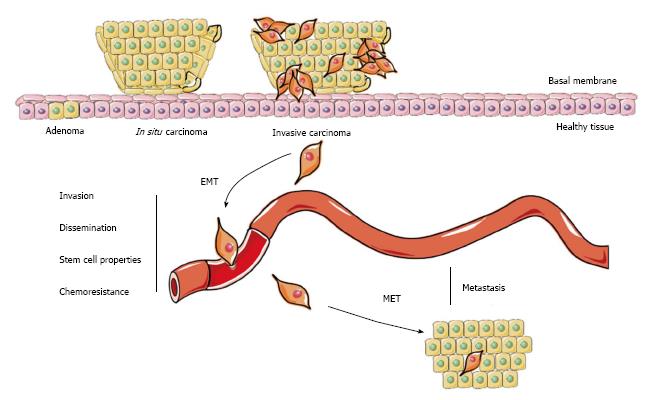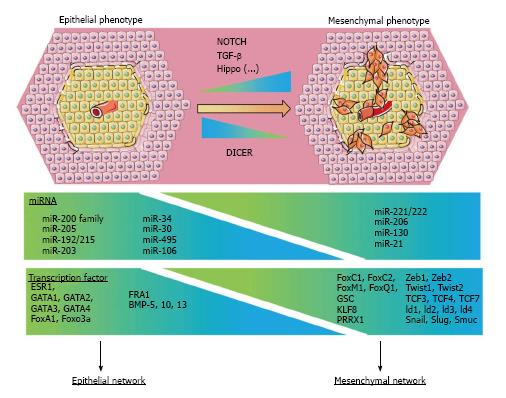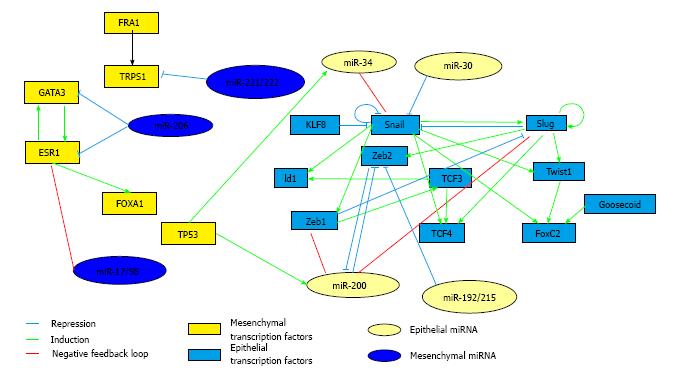Copyright
©2014 Baishideng Publishing Group Inc.
World J Clin Oncol. Aug 10, 2014; 5(3): 311-322
Published online Aug 10, 2014. doi: 10.5306/wjco.v5.i3.311
Published online Aug 10, 2014. doi: 10.5306/wjco.v5.i3.311
Figure 1 Epithelial to mesenchymal transition and mesenchymal to epithelial transition during breast tumor progression.
During tumor progression, cancer cells undergo apithelial to mesenchymal transition (EMT) to acquire invasive, dissemination, chemoresistance and stem cell properties. Thus, an in situ carcinoma progresses to an invasive carcinoma and cells disseminate throughout the entire body via the blood and the lymphatic vessels. After dissemination, cells must undergo an mesenchymal to epithelial transition (MET) to colonize distant organs.
Figure 2 Transcription factors and miRNA epithelial and mesenchymal expression networks in breast cancer.
Through activation of different signaling pathways such as TGF-β, Notch or Hyppo pathways and the down-regulation of Dicer, epithelial cells undergo the epithelial to mesenchymal transition. Transcription factors and miRNAs act together to be the “plastic surgeons” of the epithelial or mesenchymal phenotype. Regulation networks between these two main actors drive cells to plasticity.
Figure 3 Feedback and feedforward loops existing between transcription factors and miRNA during breast cancer progression.
Epithelial and mesenchymal regulators modulate their own expression creating regulatory feedback and feedforward loops.
- Citation: Moyret-Lalle C, Ruiz E, Puisieux A. Epithelial-mesenchymal transition transcription factors and miRNAs: “Plastic surgeons” of breast cancer. World J Clin Oncol 2014; 5(3): 311-322
- URL: https://www.wjgnet.com/2218-4333/full/v5/i3/311.htm
- DOI: https://dx.doi.org/10.5306/wjco.v5.i3.311











